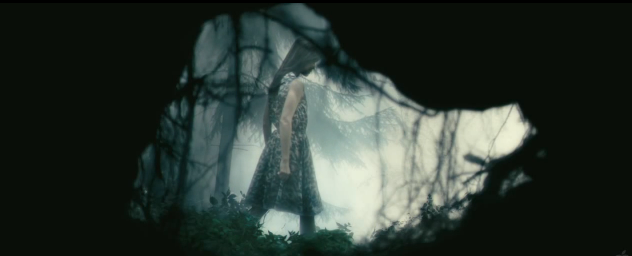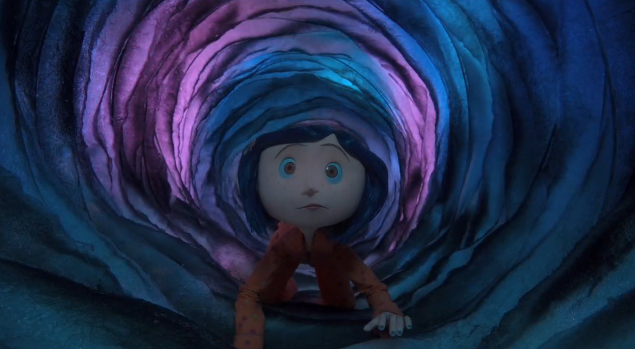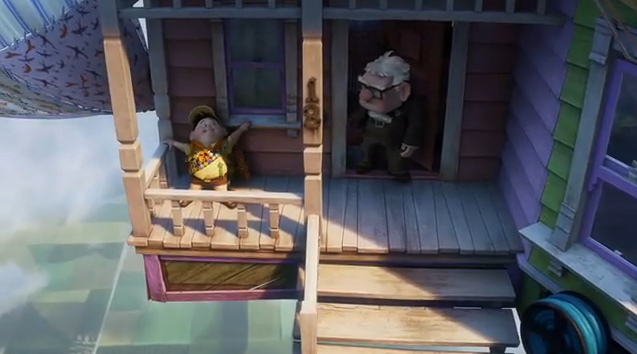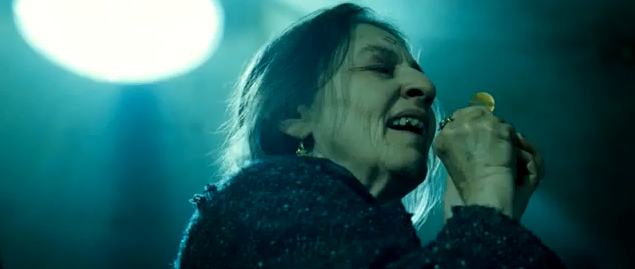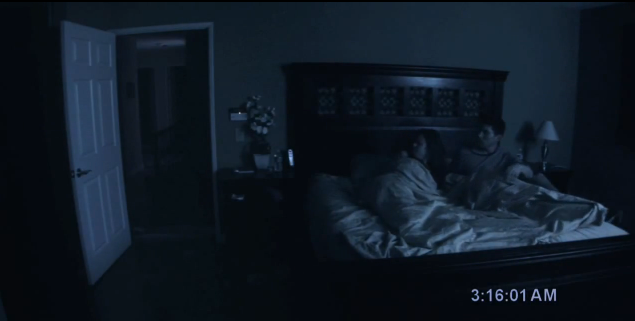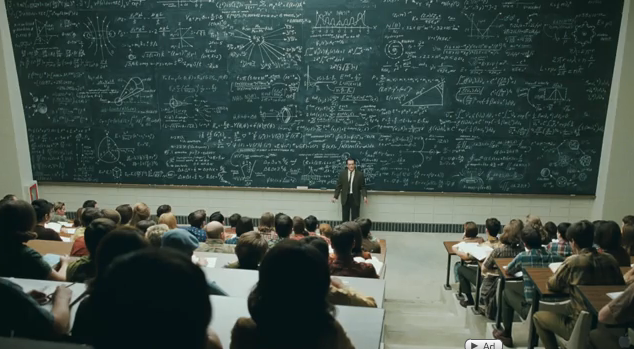Best of 2009: Film
Old, but true
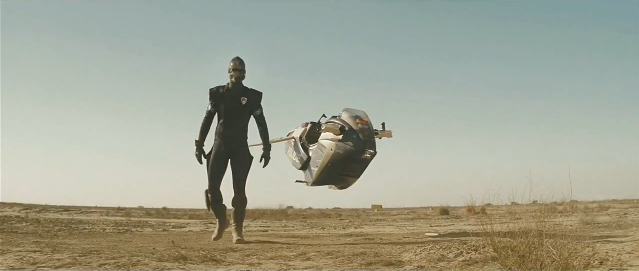
10
Star Trek
Bound to be controversial, any new Star Trek venture is vulnerable to the wrath of the nerd legions that love the series like a child. And like most new Star Trek enterprises, this community showed more scorn than love towards this latest film. That was, until people actually saw it. In an attempt to make Star Trek relevant to an entirely new generation, J.J. Abrams’ slick update goes to the root of the relationships between several of the most famous sci-fi figures ever: Captain Kirk, Spock, and Dr. McCoy. Using a time-travel tactic, the story plays out as past Star Trek adventures have described Kirk’s youth, but with the licence to twist these events as the writers see fit. The film is loud, exciting, and often times goofy where extreme liberties are taken with science and chance, typical of the summer blockbuster. But Star Trek has real dedication in its characters with interest in properly developing their relationships in fun, interesting ways all while showing the kind of grand-scale space adventure and action that Gene Roddenberry could only dream of. The story may not be true in details which will enrage Trekkies to no end, but it is true in spirit. Which is more important? I suppose that depends on how much Klingon you can recite.
written by Roberto Orci and Alex Kurtzman; directed by J.J. Abrams.
9
Coraline
After being sidelined by Tim Burton’s name after directing A Nightmare Before Christmas, Henry Selick puts his authorial fingerprint all over Coraline, making it a film truly all his own. Selick, using the loveable method of stop-motion miniatures creates an amazingly vivid, gothic cartoon wonder world — part nightmare, part daydream. Coraline is about a young girl who is needy, but her parents are so self-absorbed they wouldn’t satisfy her needs even if she wasn’t needy. It’s a somewhat typical family drama but played in eccentric extremes with a mirror world where Coraline gets everything she wants but her parents aren’t quite… well, alive. It’s creepy and creative in all the best ways that Nightmare Before Christmas was and merges CGI animation with traditional stop-motion for a uniquely memorable aesthetic.
written by Henry Selick; directed by Henry Selick.
8
The Hurt Locker
The Hurt Locker opens with a passage that states “war is a drug”. While many films have depicted the horrors of war, the inescapability of war, and in some cases, the addiction to war, no contemporary war film has been able to depict the current Iraq war in such a light. None until this film that is. Introducing us to William James, a bomb defusal expert whose skill doesn’t come from simply being good at the job, it comes from being obsessed with the job. He keeps wires from previous bombs with him as a morbid collection, disregards safety precautions, and ultimately finds himself more comfortable among the child merchants than with his own child in America. While many films depict war as dehumanizing to the point of social ineptitude, The Hurt Locker shows the human damage of war as being all consuming and alluring.
written by Mark Boal; directed by Kathyrn Bigelow.
7
Antichrist
Seemingly as a remedy for the dire horror that Hollywood has ben releasing, Lars von Trier arrives with the overwhelmingly solemn Antichrist which plays on many, many themes from parenthood, to misogyny, to the brutality of nature. Locked up a cabin, Antichrist goes as far in the opposite direction from the typical “horror movie in the woods” as humanly possible. Broken up into chapters, Antichrist is like a prolonged nightmare you cannot wake up from with syrup-thick atmosphere that is constantly chilling, uncomfortable silences and unexpected outbursts of aggression between the two leads who are slowly deteriorating mentally, physically, and sexually. The films biggest “shock” moments earned it buzz, these moments explore sexuality without restraint, but are perhaps too graphic and blur proper appreciation for the films more subtle moments. The pure insanity of the film keeps bubbling, climaxing when a fox, eating itself, proclaims “chaos reigns” which is unsettling in ways that horror films haven’t been for years. You certainly feel dirty after watching Antichrist, but it’s not an experience you will soon forget.
written by Lars von Trier; directed by Lars von Trier.
6
Up
Pixar has an uncanny ability to alternate between films with such sophistication that adults can’t help but love them to silly films that are so full of charm and life that adults can’t help but love them either. While Wall-E was certainly the former, Up is absolutely the latter. Taking tough creative choices in the film’s first act with a heartbreaking montage of life and death, director Pete Docter took a chance that most animated films would never take: giving the child-oriented audience credit as viewers. The film tugs on the heartstrings so gracefully that you develop a stronger emotional attachment to these characters than most live action films. Making the decision to avoid a realistically rendered world makes the film more light-weight fun with a vivid colour palette that compliments the extremely diverse world that the movie explores.
written by Bob Peterson and Pete Docter; directed by Pete Docter.
5
Drag Me To Hell
If there is one good thing to come out of Spider-Man 3, it’s that Sam Raimi had time to reevaluate himself as a filmmaker and catch his breath with a smaller film that plays on Raimi’s strengths and best of all, with minimal studio interference. Remember when horror movies could be fun, stupid, silly, and ridiculous? Drag Me To Hell is a reminder to those days as a throw-back to Raimi’s own Evil Dead trilogy which makes it a weirdly personal film for the director despite all its slapstick insanity. Drag Me To Hell goes in the opposite route of Spider-Man, instead of trying to please everyone, Raimi deliberately limits his receptive audience by making a film that is equal parts grotesque, outrageous, morbid, and just plain scary with a stupid plot that plays it all straight faced. There is a healthy mix of new and old from direct gags out of Evil Dead 2, cheap CGI effects, jump scares, gross-out gags and more that are made to poke fun at horror while throwing something new into the mix, and of course reward long time Raimi fanatics for sticking through the hard times of the Spider-Man years.
written by Sam Raimi and Ivan Raimi; directed by Sam Raimi.
4
Paranormal Activity
Paranormal Activity is a bit of a phenomenon thing. Upon repeat viewings and after the media blitz simmered, it retained much of its eeriness but lost its initial punch. Upon viewing Paranormal Activity at an advance screening without much prior knowledge, I realized that this must have been what it felt like to experience a new movie before media saturation had us familiar with every detail of a film before we even saw it. A terrifying surprise, Paranormal Activity takes a decent concept and runs with it much further than it has any right to. Meticulously paced, the film throws back to an earlier era of supernatural horror that lays on atmosphere and anxiety more than shock thrills. Most of the film isn’t more complicated than a crew member throwing a light switch off screen, but this minimalistic style coupled with the slow pace makes Paranormal Activity absolutely unnerving and evidence of how doing little is actually doing a lot.
written by Oren Peli; directed by Oren Peli.
3
Moon
There is nothing more exciting, and rewarding, than seeing a terrific directorial debut. Many of the years best films are basically foregone conclusions based on filmmakers track records, however there is always opportunity for new filmmakers to leave a mark. Duncan Jones did just that with Moon in 2009 by doing so many great things with the concept. A clever concept for a low-budget sci-fi film that forces an actor to act against himself for the entirety of the film, lush with homages to landmark films of the genre, and great music to top things off. Sam Rockwell is easily one of Hollywood’s most underrated actors, he can turn even the biggest turd into something watchable simply by being present. In Moon, Rockwell really gets to show the world his acting chops as he flies solo the entire film with only himself to interact with, the voice of Kevin Spacey, and recorded video messages of his wife at home. The clever clone plot spins expectations in a different direction by making it the focal point of the film, rather than the third act twist. Add a desolate station and lunar landscapes to the mix and Jones’s film is slick, grungy, hilarious, frightening, and jam-packed with visual cues to everything from 2001: A Space Odyssey to Alien. This film actually has it all.
written by Nathan Parker and Duncan Jones; directed by Duncan Jones.
2
A Serious Man
Among the many Coen Brothers characters within their lengthy, renowned career, none have been less deserving of cosmic punishment than Larry Gopnik. The Coen’s typically focus their stories on dimwits who concoct misguided schemes and ultimately pay dearly for that, taking numerous innocents down with them. The collateral of stupidity is always the most engaging, and darkly comic element of the Coen’s winning formula. So when the Coen’s made a severe adjustment to this formula, it’s unsurprising that it was met with both extreme acclaim and extreme disgust. Unlike their past protagonists, Larry is a man who deserves nothing that is coming to him. Larry is at a crossroads of life where every element of existence is seemingly to beat against him in an almost rhythmic fashion. Larry is a physics professor, a man who is supposed to have all the answers, Larry is expected to understand how the universe works and be able to identify it’s variables. And because of this demand for knowledge, the unexplainable variable of life itself, proves to be unsolvable, driving Larry mad. It’s still darkly comic, but not in an enjoyably twisted way like typical Coen Brothers, rather in a more sympathetic sense because we all understand Larry’s dilemma and his frustration with fate and it’s infinite unknowns. Larry is doomed to forever ponder the world outside of mathematical explanation, and as an audience, we can only hope the Coen’s have given us a hint to some sort of satisfaction, but the kicker is they don’t know any better than we do, they can only suggest that we “Find Somebody To Love”.
written by Joel & Ethan Coen; directed by Joel & Ethan Coen.
1
Inglourious Basterds
Taking years to write the thing, then only a year to shoot it, Tarantino was on the brink of exhausting himself as the “coolest” filmmaker in the business when he made Inglourious Basterds. However, Inglourious Basterds ended up being a sweeping, sophisticated, tightly structured epic that exceeded even the highest Tarantino fan expectations (unless those expectations were to surpass Pulp Fiction, sorry but no). Inglourious Basterds is part classy French war drama, part grindhouse revenge fantasy. Filled with the colourful characters and dialogue that Tarantino is famous for, the film oozes confidence as it strolls through history rewriting it as it sees fit. Tarantino is a filmmaker who realizes that a historical film is still a film, and is at the mercy of the writer’s discretion before the historians; if Tarantino wants a David Bowie song in his WWII film, he’ll put in a David Bowie song. Basterd’s is full of trademark Tarantino violence, and its still scumbags murdering scumbags, but the Basterds have more justification for their brutal crimes than any Tarantino character in the past — it’s a Nazi slaughterhouse that slowly builds towards its pulse pounding climax that delivers the ultimate satisfaction not only for the audience, but for Jewish people everywhere.
written by Quentin Tarantino; directed by Quentin Tarantino.
Honourable Mentions
The questionable remake of Bad Lieutenant ended up better than anyone expected with Nicolas Cage taking over Harvey Keitel’s infamous role with Werner Herzog at the helm. Taking place in post-Katrina New Orleans the film follows the morally bankrupt Cage as a detective who is more interested in scoring drugs than he is in his own case. Feeling trapped and lost, Cage plays his character with unrestrained insanity, the type that he is loved and hated for, but here it isn’t ironic: it’s suiting. Loosely paced, the film can sometimes feel pointless, but other times its shock factor shows the depths of power abuse and how a person, more specifically, how a cop can take advantage of a city in chaos and get away with it.
2009 was also a terrific year for animation. We saw colourful CGI animation in Up, brilliant stop-motion in Coraline, and elegant classic animation in Ponyo directed by Japanese animation legend Hayao Miyazaki. Ponyo is essentially a Japanese take on The Little Mermaid, similar to how Miyazaki’s previous Spirited Away was a take on Alice in Wonderland. The tale is simple and childish, which is reflected in the amazing animation that is largely simple illustrations and solid colours with amazingly hand-painted water colour backgrounds. There is less depth in this film than most Miyazaki films, but it retains the same undeniable charm.
There was also a powerful science fiction presence in the mainstream film world in 2009, not only with Moon and Star Trek, but Avatar, District 9, and Watchmen all proved to be creatively ambitious successes that captured mainstream interest. Each film is narratively troubled, Avatar being overly simplistic despite its length, Watchmen being overly crowded despite its flawless source material, and District 9 being fairly inconsistent. But each film bolstered their own definitive visual style that was unlike anything else released in 2009. Avatar didn’t boast the strongest narrative this year, but did prove several things that were left in question in regards to CGI technology: that 3D can in fact contribute to a film beyond cheap thrills as seen in Pandora’s lush, imaginative jungles; and maybe more importantly that character relationships between live action actors and animated actors can actually be convincing.
Worst Film Of The Year
Terminator Salvation
The biggest failure of 2009 was the abysmal Terminator Salvation. After spending the entire production assuring fans that he is a decent filmmaker, McG failed in nearly every regard. Shot like a grungy music video, the film looked amazing as a two minute trailer, and exhausting as a two hour film. Numerous cuts and a pathetic PG-13 rating sliced the movie up into an incoherent mess with plotholes riddling nearly every scene. Christian Bale takes the reigns as John Connor, humanity’s supposed saviour and delivers every line with over-the-top gravity while spending the movie doing nothing productive until the third act. The secret star of the film is Sam Worthington who does a good job being a robot, which might explain why he was so sleepy in Avatar. Clearly sensing the film is more about style than substance, McG packed on camera tricks stolen from better directors such as an extended one-take often compared to Children of Men, as well as fill every twenty minutes with a video-game worthy action setpiece that even includes a final boss figure in the form of an embarrassing CGI Arnold. To top it all off, McG promised audiences a powerful ending that would challenge the audience and have us talking after the movie. So how did the movie end? As textbook as it could have, with a cliched warning from Bale that the “war is far from over” — let’s just pretend it is, okay?
